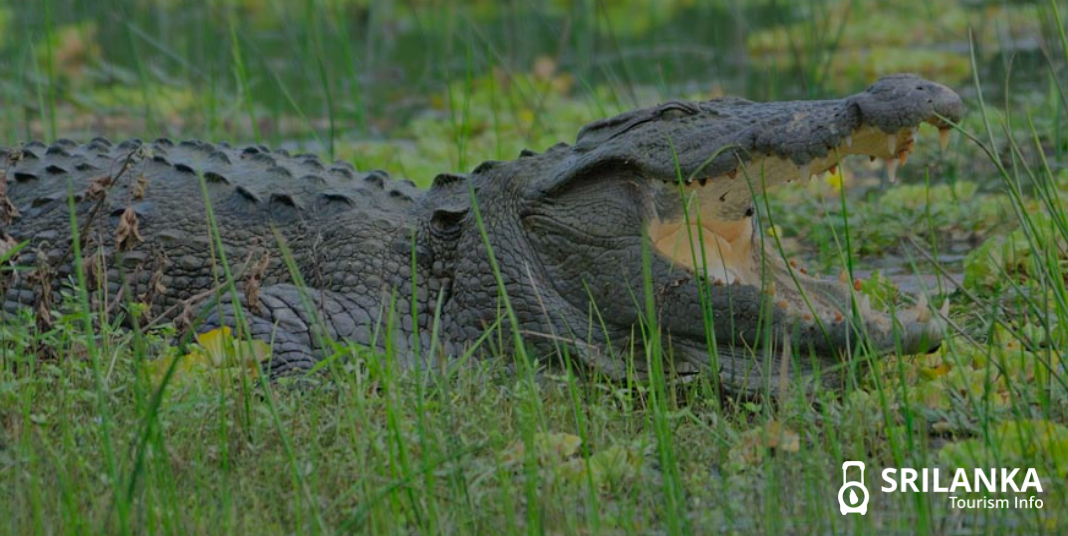The studies show that there are 23 species of crocodiles on earth today. It is believed them to be in the world ever since from the Triassic period, which will be like about 230 million years ago.
These creatures are known to be modern dinosaurs. They have existed and virtually unchanged for the past 65 million years. It is not uncommon that tourists as well as locals surfing in the waters of Sri Lanka being attacked by the alligator and its kin.
They are very deadly and dangerous. There is a reason why they are known as the new age dinosaurs. Even though they are to be scared, we cannot deny the fact that they are fascinating.
The reptile is quite a creation. To learn more about them in this session. We are trying to cover almost every detail you may find interesting. This reptile can be categorized into four main groups – Alligators, Crocodiles, Caimans, and Gharials.
Alligators have a short, rounded and blunt snout. They can be seen only in the South-Eastern United States and China. The Chinese alligator is small and is of 130 centimeters.
Crocodiles come with a long and tapered snout. They are in light tan to a brownish. There are many species when coming down to crocodiles, but there are specifically two kinds of species which are man-eaters: Saltwater Crocodile (Crocodylus Porosus) and Nile Crocodile (Crocodylus Niloticus). The saltwater crocodile is the largest living reptile, which is hunted for the skin, which is a hot product in the commercial world.
Caimans are primarily seen in the Central and South America. There are several types of caimans, but they are generally small and squat with a toothy grin.
The Gharial (Gavialis Gangeticus) is an enormous crocodile which is commonly found in Burma, India, and Pakistan. There are also but rarely seen in the Ganges River. Gharial comes with an extremely long and slender snout with a protrusion that looks like a ball at the end.
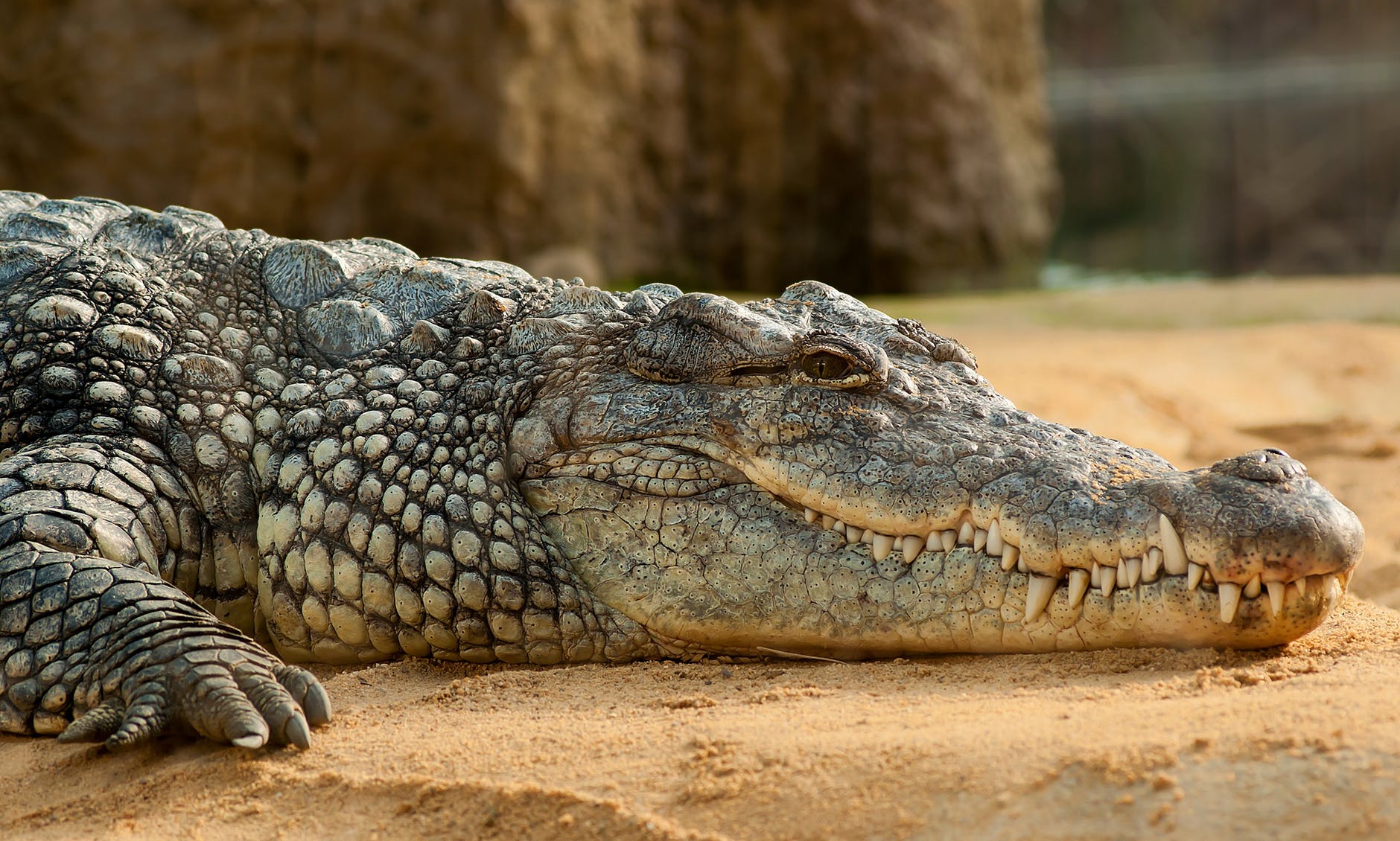
Sri Lanka has two species of crocodiles. One is Mugger, and the other is Saltwater Crocodile.
The mugger is also known as Marsh Crocodile (Crocodylus palustris) and also as Geta Kimbula in Sinhala and Tamil; it is called Chaanakan.
The saltwater crocodile is also known given another name as Estuarine and is known as Hela Kimbula in Sinhala and Semmookan in Tamil.
The marsh crocodiles in Sri Lanka is assumed to be secure since they are only a few thousands altogether from various water bodies in the country. But when it comes to saltwater crocodiles, the status is doubtful.
But we cannot ignore the fact that there has been no long term study conducted over the reptiles to come up with an assumption. Also, it is known that the creatures have been extirpated from their habitats in the country.
Also Read: Fall in love with Yala National Park in Sri Lanka
However, there is an existence of a paradoxical situation regarding these two species. The presence of marsh crocodiles is high when compared to other countries, the significant decrease in their number in those countries has made them to be an endangered species.
On the other hand, when considering the situation of the saltwater crocodiles, Sri Lanka bears the smallest amount when compared to other Asian countries, Australia and Papua New Guinea.
The presence of crocodiles is a sign of a clean aquatic environment. The feed on fishes, which result in the balance of the ecosystem, in a way that the larger species are not given a chance to dominate.
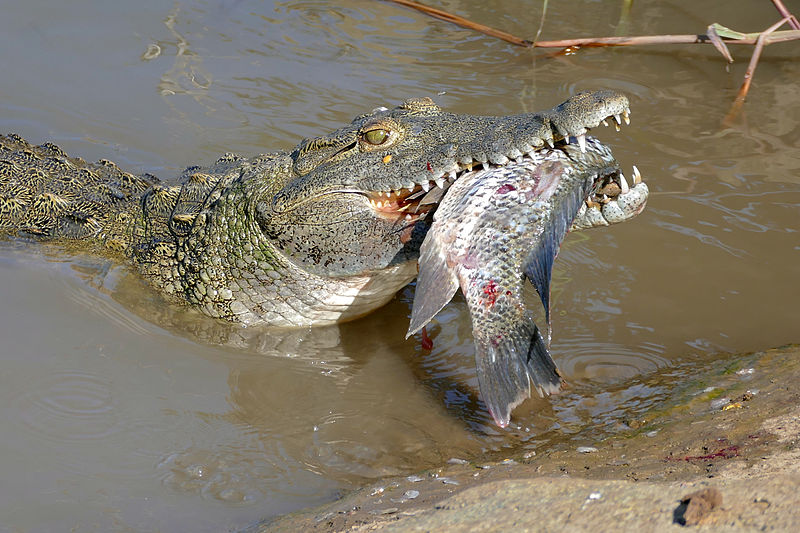
The crocodiles mainly target sick and weak fishes and help to keep the aquatic population under control and their scavenging results in clean and uncontaminated water.
Sri Lanka boasts over three hectares of inland lentic waters for every square kilometer of land. Lentic waters are known to the water bodies with no movement. For example, ponds, reservoirs all are lentic water bodies.
Whereas lotic water bodies are those where the water flows. For instance, the stream, the river is lotic water bodies. The island consists of about 12,000 human-made lakes known as tanks. They are mainly located in the dry zone of the country. It is one of the highest densities of inland lakes, ponds, reservoirs and other lentic waters in the world.
Research shows that both the species of crocodiles are distributed widely in suitable habitats across the country. The habitats of the saltwater crocodiles are confined to the coastal areas of the island.
But they are also seen to travel up sometimes to the rivers having ascended the Kalu ganga up to Ratnapura. It happens in the estuaries of big and larger rivers where the waters appear to be only slightly salty to that which is more saline. Coastal mangrove trees, swamps, marshes, and some inland water bodies are other habitats.
The marsh crocodiles are mainly found in streams, rivers, tanks and some inland water bodies. The two species use to share habitats before, but they coexist in unusual places now.
When compared to marsh species, saltwater crocodile has a broader distribution in the country. The marsh species are more likely to be restricted to the lowland dry zone. But neither of these two species are seen in places which are higher than 150 meters above the sea level.
But there are cases where the saltwater crocodiles are seen occurring in Yala National Park which was confined to the mangrove marshland in Kumana.
The Department of Wildlife Conservation (DWLC) has very recently released a large man-eating saltwater crocodile to the Bundala National Park from the Nilwala Ganga in Matara.
There is also another release of this kind of reptile to the Dehiwela Zoo in Yala National Park. Incidents are being reported of crocodiles attacking people at tourist places.
Vertebrate animals have skin that covers their body. It is made of two layers, which are the outer epidermis and the inner epidermis. But in reptiles, the outer layer is hard, tough, and hardened.
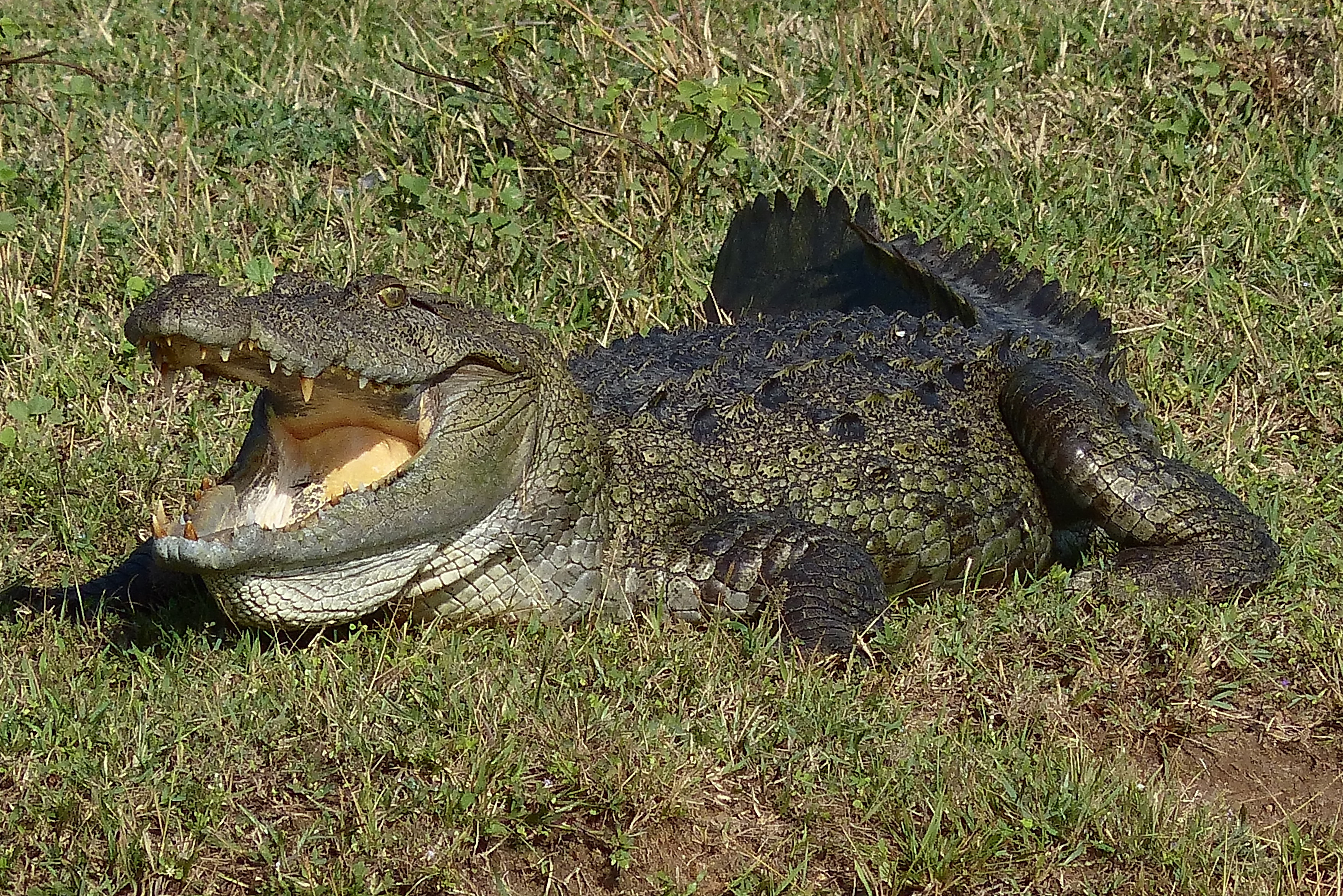
The crocodile skin consists of epidermal scales modified into structures called scutes. On the dorsal side of the body, plates lie under the epidermal scutes. These are known as osteoderms.
The pattern of their dorsal osteoderms can differentiate the two crocodile species.
The osteoderms of the marsh crocodile are rectangular, and it aligns to form transverse rows. The snout is short wide and has four post-occipital scutes where the skull joins the spine.
While the saltwater crocodile has ellipsoid osteoderms which stand separated from one another by the epidermis, the snout is elongated. It has no prominent scutes, and the place where the head joins the body is covered with small and granular scales.
An adult marsh crocodile is a dorsally olive green color that shades into brown along with black or brown bars or spots. Ventrally it is white with slight dark gray transverse bands which are interrupted mesially. But none of the black markings extend beyond to the two rows of scales and are constant in size.
While the saltwater crocodile is dorsally a yellow color with spots and blotches of black in four/five transverse rows, ventrally it is pale yellow with dark spots under the hind limbs and subcaudals. When the animal grows to the length of three meters, the dorsal color becomes almost uniform black, and the head and jaws turn yellow with dense speckled black.
Marsh crocodiles are known to be temperament. Marsh reptiles from one habitat may be ferocious while the reptiles from the nearby swamps and reservoirs will allow people to bath or fish with impunity. While on the other hand, seawater crocodile is usually a man-eater than even attacks human very often.
Crocodiles usually spend most of their time in the water. But they are not comfortable with the waters which are deeper than 10 meters. At the time of drought, crocodiles those are harassed by man tends to leave the water and find shelter till they reach a certain level which still ample for their safety.
Also Read: Breakfast with Elephants
The others who live in jungle swamps remote from villages continue to stay on them as long as the moisture remains. Young crocodiles emit croaks while adults croak and emit a bellowing grunt, which can be heard from a distance.
Crocodiles can be seen regularly on banks of rivers, tanks, etc. They can be seen with even their mouth open; sometimes, it is to regulate the temperature of their bodies through heat dispersal.
During the period of the 1970s, the fisherman used to hunt crocodiles for producing dried meat. They were also killed because they were considered to be a nuisance for human activities in the waters.
Along with that, the destruction of mangrove and marsh areas due to urbanization and wanton destruction has resulted in the depletion of the reptile’s number.
The breeding habitats of the two crocodile species also differ. The marsh crocodile buries the eggs in sandy soil and decaying leaf matter mainly along the riverbanks and tanks. The seawater crocodile instead builds a nest using flag plant or pandanus palms, reeds or thick grass. The vegetation where the nest is built decomposes and generated necessary heat for the incubation.
The marsh crocodile females start to breed from the age of 6-8 years, and the saltwater crocodiles begin from age 10-12 years. The males mature as they get older. The marsh species, as well as the saltwater crocodiles, are found to breed once in a year. The two monsoons that occur annually in the island bears the breeding regimes of the two species.
Most female crocodiles remain nearby their nest during the incubation period to protect it from the predators. While hatching, the sounds produce or the vocalization by the hatchlings signals the female to assist them to emerge from the egg. In some cases, the mother even carries the babies in her mouth to the water.
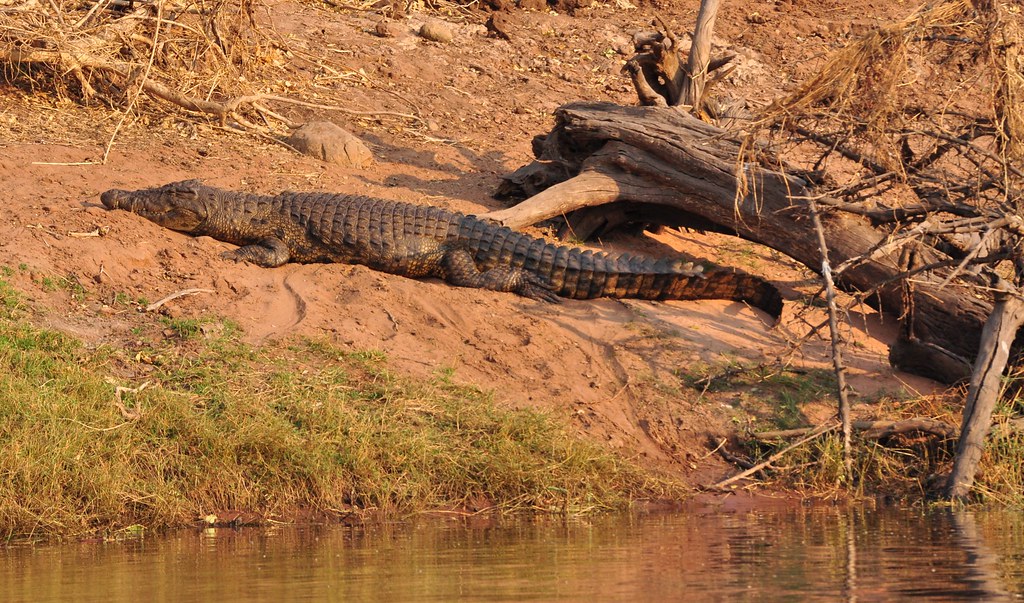
The temperature determines the sex of the hatchling. Males are born during the high-temperature periods. The hatchlings remain with the mother for a few months and enjoy the protection provided by her. As they grow, they become independent. Most of them are perished due to the predation of wild pigs, monitor lizards or feral dogs. More massive crocodiles even predate some.
Long before the locals used to construct ‘crocodile proof’ enclosures along the rivers which drain out to the sea on the southwest coast of the island, these were used for safe bathing purposes. The fences were of railway sleepers that were planted in the water with opposite sides coming up the bank. Since there is a decrease in the saltwater crocodiles, less these enclosures are seen.
Crocodiles are a secured species globally, but the saltwater species in Sri Lanka is in extreme danger of extermination due to urbanization, and the dislike towards it since it has a reputation as a man-eater. The human activities threaten both the species in Sri Lanka. The reasons being drainage and infilling, deforestation, conversion, destruction, and clearing of natural and wetland crocodile habitats.
Indiscriminate killing for dried meat and commercial overexploitation are also included in the list of reasons. Dried crocodile meat is believed to be a cure for asthma.
The destruction of the primary shelter plant which the saltwater crocodile used as nest material has affected its breeding. The nests suffer egg predation from crows, dogs, land monitors and egrets. This result in a decrease in the crocodile population.
The crocodile conservation depends on good management practices; the maintenances of habitats leads to successful coexistence between crocodiles and humans.
Both species require complete protection through legal ways in protected regions and preservation in captivity. Fishing, which is a vital source of income, is hampered by the presence of crocodiles.
Conservation programs need to start now; the Sri Lankan government should come up with a development policy for the crocodiles. Trained and dedicated people should be recruited for the program, and it will help in successfully saving the crocodile population in Sri Lanka. Many countries have come up with the idea of crocodile farms. It not only caters to the trade demand for crocodile skins but also aids in the conservation of the species.

